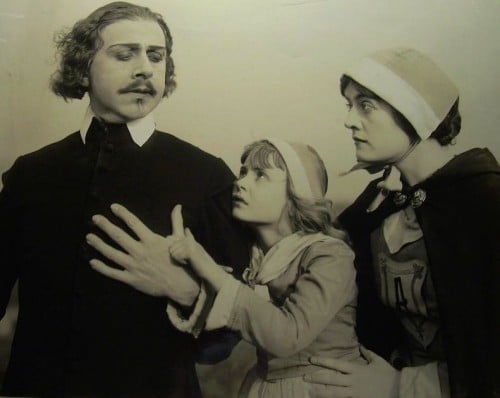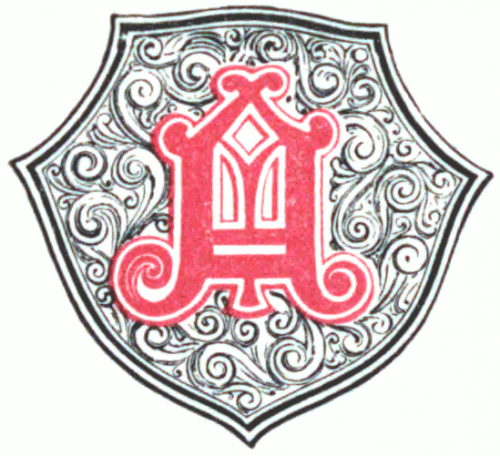While thumbing through the chapters of The Scarlet Letter, by Nathaniel Hawthorne, you may wonder why you’re reading it in the first place. On the surface, it’s hard to relate to–it is written about the Puritans in Colonial America, after all. Not exactly in tune with your life, right?
It’s time to take out your fine-toothed literary comb and start to pick through the content. Once you find and start to understand the symbolism in the novel, it starts to become more relatable.
Don’t worry if you’re not great at hunting down symbolism quite yet–I’m here to give you 4 tips for dissecting symbolism in The Scarlet Letter.
Know What You’re Working With–What is Symbolism?
Before we get into the awesome tips I have for you, it’s important to know first what symbolism is exactly.
Symbolism is a person, place, or thing that represents an abstract concept.
Literature is absolutely saturated with symbolism, but you can find examples in real life too. The heart, for example, symbolizes love. (Fun fact: in ancient Rome and in Biblical texts, the liver was the organ associated with love. Imagine saying, “I love you from the bottom of my liver!”)
Symbols can get a bit more complex, though. For instance, the government or the President might represent freedom, leadership, and democracy to some. But to others these things might symbolize oppression or a country’s decline. The same person, place, or object can symbolize different things to different people depending on the interpreter’s background.
In literature, a symbol’s definition is usually made more clear–though it can change throughout the story as the characters develop and the situation changes. For the purposes of the examples I’ll point out below, I’ll call that kind of symbol a transitional symbol.
Because symbols aren’t always representative of just one idea, the explanations above probably aren’t enough to get the concept of symbolism to really sink in. So let’s get into symbolism in the Scarlet Letter complete with tips and examples to really bring the point home.
The list below is by no means an exhaustive one. There are plenty of symbols in The Scarlet Letter that you can really sink your literary teeth into. These are just a good place to start–a kind of boost to get the creative thought process going.
Symbolism in The Scarlet Letter Tip 1: Colors Are Usually a Good Place to Start

Three colors play a huge role in The Scarlet Letter–red, black, and gray.
Red symbolizes sin.
The scarlet A (which we’ll get into more detail about later), the mark on Dimmesdale’s chest, and Pearl–who wears red clothing–are all representations of the sin that Hester and Dimmesdale have committed.
Black and gray symbolize death, sin, evil, and the oppressive life of the Puritans.
Late in the novel, Hester and Dimmesdale meet near a black forest over which hangs vast gray clouds. The black and gray in this case represent the guilt imposed by the strict rules of the Puritans. The gray clouds (and the lovers’ guilt) lift once they begin discussing plans to run away together, and the sun shines on Hester’s hair.
Hawthorne uses the Black Man throughout the book as a symbol of evil, sin, and the Devil. The scarlet A and the mark on Dimmesdale’s chest are both said to be put there by the Black Man–though no one really knows how Dimmesdale got his mark.
Symbolism in The Scarlet Letter Tip 2: Concentrate on Characters

The four main characters hold great symbolism in The Scarlet Letter. These characters are:
- Hester
- Pearl
- Dimmesdale
- Chillingworth
Hester is a symbol of goodness and independence.
Despite a rocky start and being branded a sinner, Hester is a symbol of goodness and independence. She is forced to be independent by raising Pearl on her own all while being ostracized by her community. Instead of being burdened by the letter on her chest, she learns to live above it, sewing clothes for the poor and giving help to anyone who needs it.
Pearl is a symbol of the freedom of wild nature.
Pearl, Hester’s daughter, is the illegitimate result of a love affair. As mentioned above, she symbolizes Hester’s sin to the rest of the Massachusetts Bay Colony and to the reader. But soon, the reader discovers Pearl’s wild nature and she becomes a symbol of the freedom of wild nature.
Dimmesdale symbolizes hypocrisy.
And even he knows it. While Hester bears the brunt of social ridicule, Dimmesdale is one of the most well-liked people in the colony. The Puritans view him as holy and pure, even though he sinned and didn’t admit to it. He even distanced himself from Hester for seven years. He felt guilty over this and whipped himself, but it wasn’t until the end that he admitted to being Pearl’s father.
Chillingworth represents evil and Satan.
Chillingworth is one of the most obvious symbols in the novel, representing evil and Satan. He wants revenge for what Hester did and goes on a hunt for Pearl’s father. When he finally figures out that her father is Dimmesdale, Chillingworth tortures him. When Hester and Pearl see Chillingworth and Dimmesdale together, Pearl warns Hester not to get too close to the Black Man or he may get to them too–linking Chillingworth to the Black Man.
Symbolism in The Scarlet Letter Tip 3: Explain the Setting
Two settings oppose each other and provide much in the way of symbolism in The Scarlet Letter.
The Town Square Symbolizes Puritan Religious Values
The town is like most early northeastern towns–featuring a square in the middle with a prominent church. The straight lines of the town, the presence of the church, and the pillory in the center of the square all symbolize the Puritans’ strictness and adherence to religion.
The forest symbolizes freedom, especially freedom from Puritan law.
The lovers Hester and Dimmesdale are able to meet freely in the forest, without neighbors judging, and Pearl is free to play and be her wild self.
Symbolism in The Scarlet Letter Tip 4: When in Doubt, Look at the Title

Symbolism in The Scarlet Letter couldn’t be any more obvious than the scarlet letter itself. But while the fact that it’s a symbol is readily apparent, what it symbolizes might not be.
As I mentioned above, the scarlet A symbolized the sin of Hester and Dimmesdale, at least at first. But the scarlet letter is one of those transitional metaphors I was talking about.
As Hester grew to accept her outcast status, the A comes to symbolize something different. It becomes a symbol of identity and independence. Hawthorne eventually references both the words “able” and “angel” to describe Hester–two words that, by no coincidence, both start with the letter A.
Hester’s ability as a seamstress and her good nature are what people begin to know her for– instead of her adultery. The townspeople even speak of letting her take the A off her clothing, but at that point, the scarlet letter is already a part of Hester’s identity–not oppressive, but liberating.
Final Thoughts on Symbolism in The Scarlet Letter
As I said before, there are many more examples of symbolism in The Scarlet Letter, and I encourage you to find more on your own. Here are some common themes to look out for that will help you identify and explain these symbols:
- Freedom vs. oppression
- Good vs. evil
- Sin vs. purity
If you need some more ideas, check out these example essays on symbolism in The Scarlet Letter. Hopefully they can give you ideas about how to tackle your own assignment.
If you get through writing your essay, but you’re not sure that it’s up to snuff, send it to our editing team for corrections and feedback.